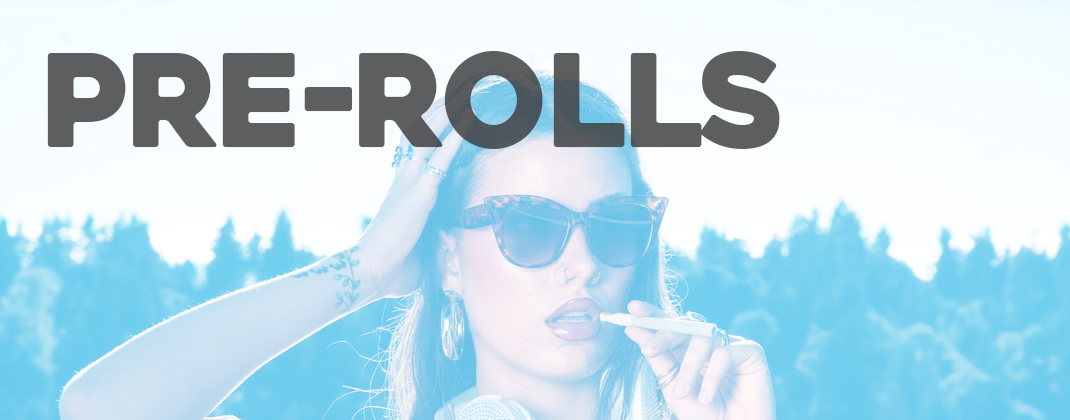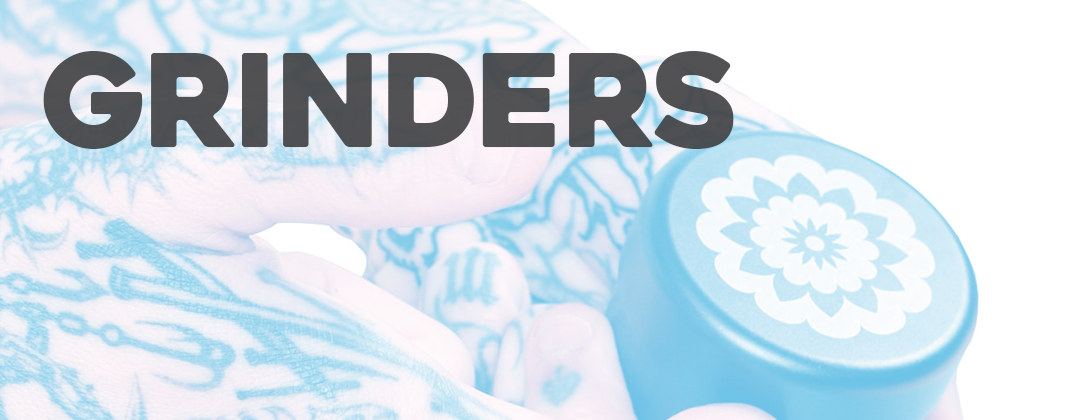How to Read Cannabis and Pre-Roll Labels
Posted by DaySavers Team on Oct 30th 2025
Every cannabis product you buy in a retail store or dispensary has at least one thing in common: they all have special labels that are required by law to deliver a bunch of different information, with some being much more useful to consumers than others.
But between the percentages, batch numbers and other info like lists of terpenes, cannabis packaging can feel a little overwhelming or even intimidating.
But once you know how to read it, you’ll be able to shop smarter, choose products that better fit your needs, and have a more consistent experience every time.

What’s on a Cannabis Label?
So here’s the thing: Every state is different. Literally.
Because cannabis is still federally illegal, each state that has created a medical and/or recreational marketplace has created its own set of rules and regulations for exactly how cannabis is dealt with in that state.
These rules not only include who can grow, process and sell, but what they can use to do it, where they set up shop, what products they can create and how they get packaged and sold in stores.
And while every state has a labeling requirement, they are all different and unique in their own way. For example, DaySavers is located in Washington state, just outside Seattle.
Here are the labeling requirements for our state (not including packaging information like warning symbols):
- Producer and Processor Details: The business or trade name and Washington State Unified Business Identifier (UBI) number for both the producer and processor.
- Product Identity: The common or usual name of the product (e.g., "flower," "edible," or "concentrate").
- Unique Identifiers: A lot number that matches the number on the transportation manifest and is reported in the state's traceability system.
- Net Weight: The product's net weight in ounces and grams or volume, as applicable.
- Potency Detail for Edibles: The total milligrams of THC and CBD, amount per serving, and number of servings per package.
- Potency Details for Inhalable Products: The THC and CBD content as a percentage.
- Ingredient List: A complete list of all ingredients for edibles, including allergens.
- Extraction Method: If solvents are used to create a concentrate, the label must disclose the type of extraction method and any added chemicals, compounds, or terpenes.
- Testing Results: Labels must indicate that the product has passed state-mandated quality assurance testing. Consumers can also request lab test results for any product from a retailer.

That’s a lot for a label, which is why the font gets so small on these things.
But while every state is different, they contain the same major information points for the consumer that we all need to understand:
- Product type and/or strain
- Potency in terms of THC and often CBD content
- Manufacturer or source contact information (licensee name, etc)
- Batch or lot number / production tracking identifier
- Net weight or volume of the product
Some states require – and some producers in states that don’t include – additional helpful information like terpenes, and we’ll get into that too.
But for now, let’s start at the top.
Product Type and Strain
Right off the top, labels should tell you what type of product you are dealing with, be it flower, pre-roll, edible or vape. Yes, this should be pretty obvious from looking, but not all packaging allows for customers to actually see the product.
Many labels will also include the strain name or genetic lineage of the flower as well as weather that strain is considered a sativa, indica or hybrid. However, one of the dirty secrets about the industry is that often, strain names and even the sativa/indica/hybrid labeling is kind of bullshit.
Research has shown that in the modern cannabis industry, the plant has been crossbred so many times – and often in underground or hidden grow rooms that didn’t exactly keep records – that the labels are almost meaningless. That’s not to say there is not a difference between indicas and sativas or that the strain of OG Kush you’re buying from your favorite producer is not what it says it is, it’s just that there is no real way to prove any of it anymore.
That said, different flower hits differently. So while strain names aren’t standardized across the industry, and while the type of flower is mostly meaningless, they can provide clues about expected effects, aroma and cannabinoid content of any given product.
Potency Labeling
From a consumer standpoint, the most important number on the label is going to be the potency of the cannabinoids in the product. While by no means a full indication of the experience – or even just the “high” – consumers repeatedly tell us that it’s the most important factor driving their purchases.

The top-level numbers that concern most people are THC and THCA. THC, of course, is the psychoactive cannabinoid most associated with weed. It's what gives you the high and the percentage tells you how hard that product will hit. For example, a THC percentage of 17-18% is going to be a nice “session” style weed while THC levels around 30% and higher are more likely to knock you on your ass quicker.
THCA is what is known as the “Acidic” form of the molecule, before it gets what is known as “decarboxylated,” a process created by adding heat that prepares the molecule to work with the cannabinoid receptors in your body. While THCA is not psychoactive, adding heat to it to make it into THC makes it so.
And here’s a fun fact: While states often require a test for THC (and the federal government defines the difference between hemp and cannabis as a specific percentage of THC), there is NEARLY NO THC in your flower. It ONLY transforms to THC after you hit it with fire.
Instead, labs actually measure the amount of THCA in the plant, and then multiply that number by 0.877 in order to get the THC percentage of the product.
States often require additional cannabinoid percentages as well, including CBD, or cannabidiol, the non-psychoactive cannabinoid most often associated with the pain reducing and inflammation controlling properties of cannabis. Unless you are specifically buying a high-CBD strain, this number will usually be very low.
Additional cannabinoids that can be included are CBN, which aids in sleep, CBG, which aids in focus and alertness and may help with glaucoma, CBC, which elevates the mood and pain perception, and others.
These will generally be very small numbers, sometimes only fractions of a percent, though do not discount their effects, particularly how they all work together in what is known as the “entourage effect” for a sum greater than its parts.
Interestingly, some states, such as New York, require more detailed potency information, sometimes even breaking it down as far as a number of milligrams “per puff” or “per inhalation.”
Manufacturer or Source Information and Batch Number
Whether identified by name, license number or both, all states require cannabis labels to tell consumers exactly where the product comes from. Not only is this part of the track-and-trace systems that are in place to ensure that product is not diverted to illegal channels, this can help a buyer cut through any branding or trade names to find out the official, legal name of the business that produced the cannabis.
Additionally, cannabis labels include the batch number and maybe even a harvest date, depending on where you are buying. This is mostly used by the state for monitoring purposes and tells them, through the state’s seed-to-sale tracking system – when the batch of flower used in the product was grown, harvested, processed and tested, and maybe even the store in which it was sold.
Some states require info from testing, others do not, but the batch numbers – as well as qr codes often found on the labels – will help you get that exact information, if you need it.
Did you know that despite every state requiring the testing of cannabis products for dangers like pesticides, heavy metals and microbials, smoking accessories like rolling papers or pre-rolled cones are not required to be tested?
That means despite your (and the state’s) best efforts to protect yourself from harm, your cones and wraps could undercut your whole effort!
Yeah, we were shook too.
That’s why DaySavers tests all of our products, including our pre-rolled cones, artisan tubes, Fill-a Blunts hemp wrap pre-rolled blunts and even the Smoke Temple Cross Cone, are always tested to the strictest standards in the industry, so you can be sure your pre-roll is as clean as the flower you put into it!
That’s Simply Superior.
Net Weight or Volume of the Product
The final main piece of information found on a cannabis label is the net weight or volume of the product. This is usually in grams, with 28 grams equaling an ounce, or 3.5 grams equaling an eighth.
For pre-rolls, this weight would be the weight of just the flower, not the flower and cone, so it can usually just be divided by the number of pre-rolls in the package to get the weight of each individual pre-roll.
Additional Info - Terpenes
Some states require terpene testing as well. Even in states that don’t require it, there are some manufacturers that add the terpene profile to their labels.
Terpene percentages are a deeper level of info for consumers looking to make an educated choice. Terpenes are the molecules inside plants that give them their distinctive aromas and flavors. There are hundreds of naturally occurring terpenes in plants, including cannabis. They are used by the plant to both attract pollinators and defend against unfriendly insects.

In the cannabis world there are a handful of primary terpenes, each of which have their own distinct aroma and affect the body in different ways.
For example, Pinene is the terpene that smells like, well, pine needles. It has anti-inflammatory properties and can be an energy booster.
Limoene is the citrus terpene that gives your weed that distinct lemon smell. It works as an antidepressant, antifungal, antimicrobial and antispasmodic.
Linalool is the lavender terpene. It is an analgesic and antiepileptic, but as anyone who has a diffuser will tell you, it is most used for relaxing and/or helping with sleep.
Caryophyllene is the terpene found in black pepper, Thai basil and cloves. It is anti-inflammatory, analgesic and protects digestive tract lining.
Myrcene is the terpene most associated with fresh mango or hops. It too is an analgesic and anti-inflammatory that also has muscle relaxant and sedative properties.
There are, of course, many other terpenes, but these are just some of the most common. By reading the percentages, you can get a sense of not only how the flower will smell and taste, but also about some of the effects you’ll get after smoking it.
Final Thoughts on Reading Cannabis Labels
And there you go. Now you have a basic understanding of the various numbers and information available on the labels of your favorite cannabis products.
Whether you are looking for potency, flavor or something else, cannabis labels provide everything you need to make a choice that is right for you that goes beyond simple strain names or colorful packaging.
But remember, every state is different and for a full explanation on what is on the labels in YOUR state, visit the website of whatever government agency handles your cannabis regulations. Or simply follow the QR code on the label.
Now find your favorite and get packing! Enjoy Your Day!
While every state has a cannabis labeling requirement, they are all different and unique in their own way.









